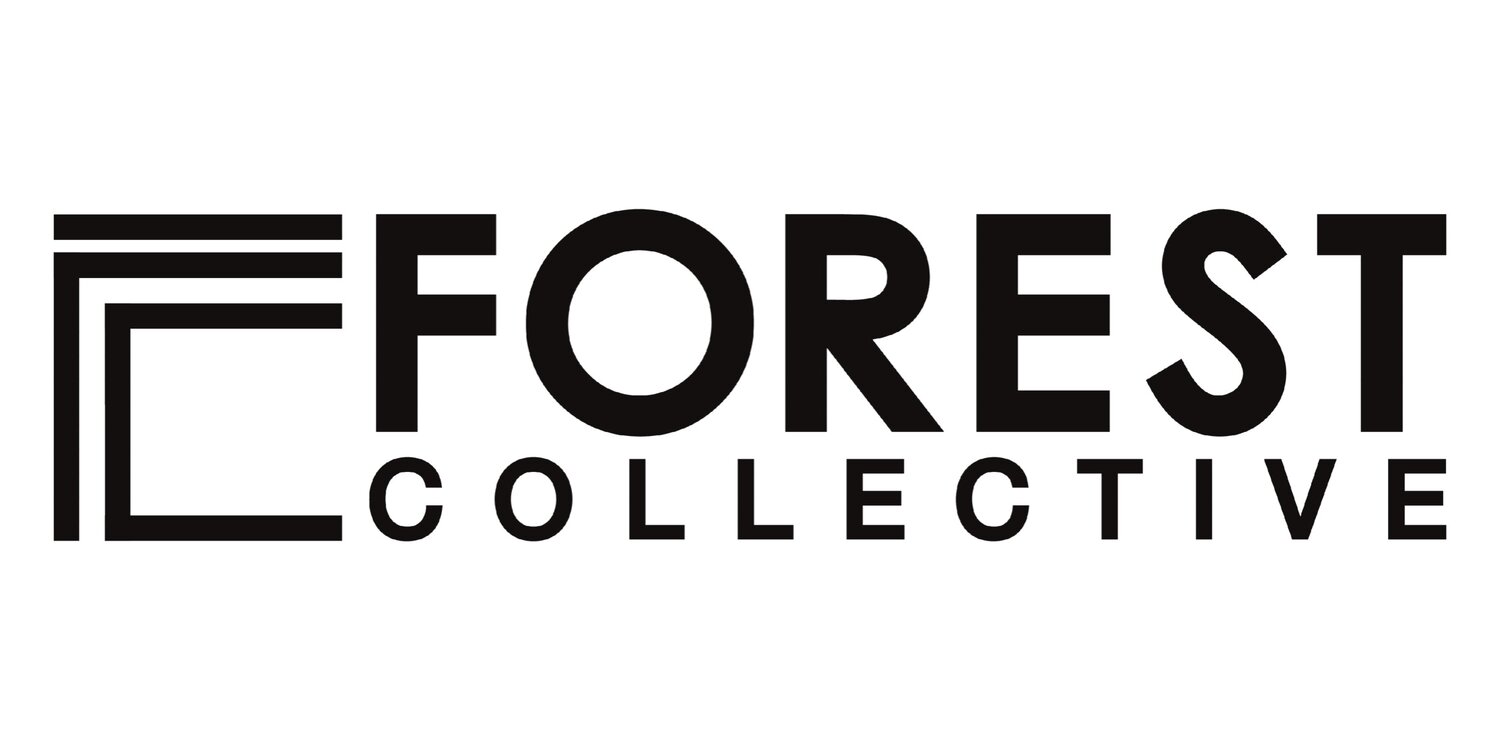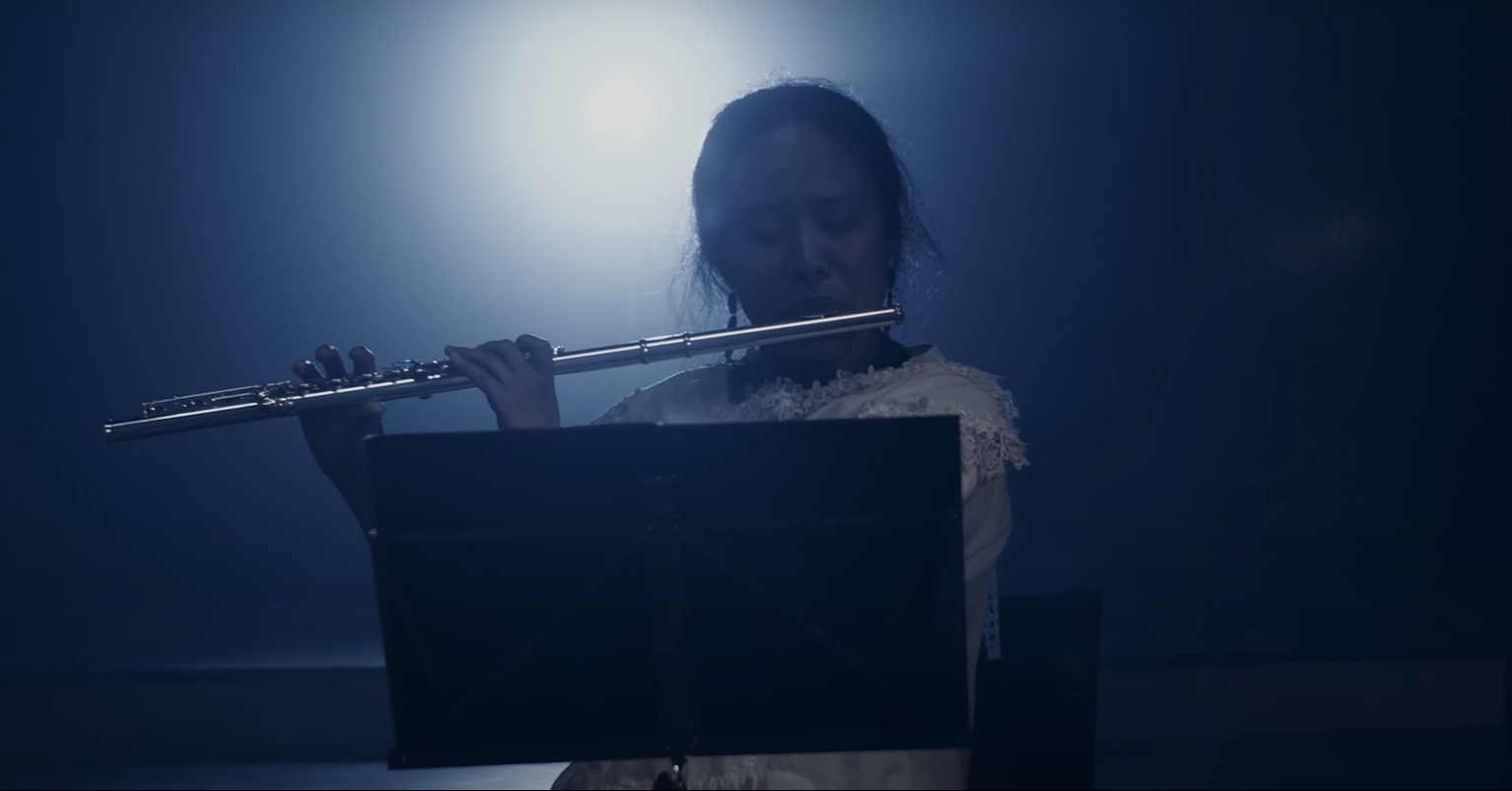The Body in Music - Kim Tan on Inspiration & Recovery
A year ago, Kim Tan, a flautist with Melbourne contemporary music ensemble Forest Collective, could no longer pick up her flute.
Kim Tan performing in Pierrot for Forest Collective.
Days earlier, she was sitting at her piano while isolating at home with covid, and suddenly noticed that she couldn’t play a scale with her left hand. This struck her as strange, having played piano since the age of five. She looked into the mirror and tried to smile, and realised that half of her mouth wouldn’t raise. She called the covid hotline to ask if this was a symptom. It was not. Kim was having a stroke.
Kim was rushed to hospital and into an isolation ward, where she sat alone with worsening symptoms over the following days. Eventually she lost all movement in her left side. She couldn’t walk, was slurring her speech, and couldn’t sit up for more than five minutes at a time after her abdominal muscles stopped responding.
Just over a year later, on Sunday May 28, Kim Tan will perform Nataraja, a recital of virtuosic contemporary music for solo flute at St Stephen’s Anglican Church in Richmond.
Back in 2022, as Kim lay in her hospital bed, she never doubted that she would find a way to play music again.
“It was really, really frightening,” Kim recalls, “but in many ways, I had the mindset of ‘I’m not having any of this,’ Some may call it denial, but I call it determination!”
When Kim returned home from hospital, she immediately drew deeply from her willpower.
“I set myself goals in my recovery, starting with lifting just one finger up and down. I would do this for five minutes, and then need a 20-minute nap straight after. After two weeks, I could just hold my flute by peeling my fingers back and placing them on the keys.”
Kim hoped that the sensation of touching the keys would trigger some kinetic memories to reforge the neuron connections in her brain. But it was listening to a performance by fellow Forest Collective artist Kym Dillon that provided her with her first big breakthrough.
“Just hearing Kym’s performance of her work Diapsalmata was enough to make my hand respond. That was the moment I could move it again for the first time!” she recalled.
After having played the flute for 18 years, Kim’s next step was to relearn the instrument’s most basic skills. She relearned how to play a single note, the fingering of a C major scale, eventually progressing to beginner exercises. After a month, she could play for five consecutive minutes before needing rest.
+ + +
The pace of Kim’s recovery has been quite extraordinary.
“I feel very lucky” she says quietly. “This concert will be a celebration of that recovery – of being able to play the flute again. It’s repertoire that I love, that also really stretches my technique.” The themes of her recital are strong: creation, destruction and rising from the ashes.
The recital is called Nataraja, taken from Jonathan Harvey’s 1983 work for solo flute and piano, inspired by the famous representation of the Hindu god Shiva. Surrounded by fire, Shiva Nataraja is the Lord of Dance. With one foot on a demon and the other stretched out gracefully, Shiva dances the Tandava – the song that creates, preserves and destroys the universe. Kim first played this piece in her final undergraduate recital and it spoke to her heart.
“I remember thinking: this is the kind of music I want to play. This is the kind of musician I want to be – to play avant garde contemporary music. This is what I will spend my life perfecting and mastering.”
Shiva Nataraja - The Lord of Dance
Harvey’s Nataraja is complemented on the program by some haunting and fiercely difficult repertoire, including Kaaja Saariaho’s Cendres (Ashes), Brett Dean’s Demons and Sungji Hong’s Agonia. All three of these pieces wrestle with repeated ideas – the composers return again and again to the same thematic material, but with different textures, timbres and combinations of instruments. For Kim, this speaks to the way we all wrestle with our inner demons.
“They resurface compulsively throughout our lives, and we are forced to confront them in different ways. But ultimately, we must seek to flip this situation – to ask, how can I make this feed me? How can I make it restorative, rather than retraumatising?”
When it came to the agonising repetition and exhaustion of relearning the flute, Kim found that she could avoid despair through teaching music.
“I really love teaching, so when it was taken away from me, I realised how important it was in my life. So, I went back to work very early in my recovery, against the advice of my nurses and doctors. But I realised I could change my approach, so that it could feed me and my recovery.”
“Firstly, as a teacher you’re often demonstrating things on the instrument for your students. Unlike practicing alone, you demonstrate those finite movements just once, and very carefully – then repeat that over an entire day of lessons. By comparison, the constant repetitions of solo practice are much more neurologically exhausting.”
“Secondly, when practicing alone, you are in your own emotional space. But when you’re teaching, you’re thrown into the world of your student – into their desires, expectations and enjoyment. By focussing on the student’s experience, I wasn’t emotionally attached to the need to sound good, or get better faster.”
“Really, it was my students’ progression that helped me heal!” Kim says. “The joy of someone else’s learning helped me find joy in my own learning. I would tell them, let’s make those neuron pathways together! The body learns best when it is happy and joyful.”
+ + +
Kim did not lose any cognition or memory from the stroke. As a result, she was acutely aware of how slow her body was responding to her brain’s signals.
“It’s like being really munted!” she laughs. “It can be really frustrating. But I understand my body better now. I’m actually listening to it – I don’t think I could have gotten to where I am without really listening to my body. I needed a lot of sleep and a lot of bananas, so the brain could get the potassium it needed to heal!”
For Kim, this disjunct between mind and body is echoed in the nature of contemporary Western art music.
“Sometimes we think of our bodies as a slave to our minds. We have a desire in front of us, and we flog the body like a horse to reach it, without listening to what our body is telling us. And music, particularly contemporary music, can be so cerebral. It forces the body to be a slave to the abstract – to physicalise a musical idea that is completely conceptual.”
“I’ve played many contemporary works that negate my body, and the work I’ve done to craft my technique. Pieces that hurt, and might make me unable to play the following day. And why? To embody the ideas that the composer sought to capture in sound.”
“But I’m a body!” she exclaims. “Music has to be actualised! It has to become matter – a compression of particles in the air – that’s what sound is. Not just pure ideas or pure concept.”
It is this understanding that has inspired Kim to revisit pieces that she loves in Nataraja, particularly from her university days.
“I want to return conceptual music back to the body, to find a happier marriage of the two. It’s definitely necessary to push the boundaries because otherwise you don’t get progress or new ideas. But that tension, that fissure can be brought closer if we understand ourselves as expressive bodies, rather than just thinkers of ideas.”
“The agony of getting as close as possible to something that is unreachable is where the magic lies.”
Nataraja – Kim Tan in recital takes place on Sunday 28 May at St Stephen’s Anglican Church, 360 Church St, Richmond.
Standard - first release $22 / second release $25 / third release $28
Seniors - $20/$22/$25
Concession (Concession card, pensioner) - $15/$20/$22
Student - $15
Group of 4 - $90
Under 15 - $15
More information at https://www.forestcollective.com.au/projects/nataraja




